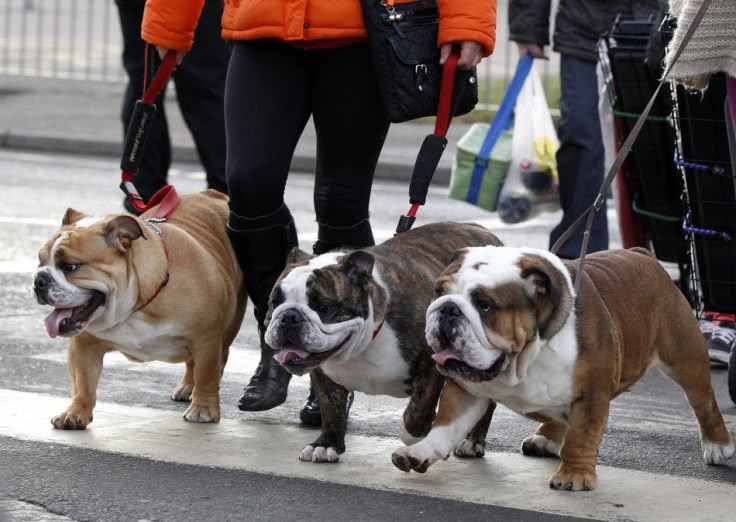Dog Excrement Keeps The Lights On At Arizona Park

Students from Arizona State University have come up with a novel way to reduce waste around the local dog park and cut energy costs using a dog waste digester -- a device that creates poo-powered electricity.
Over 200 dogs visit Cosmo dog park in Gilbert, Ariz., every day -- which equals a lot of dog waste left behind. The students at the nearby university decided to take advantage of that waste to power the park. To do so, dog owners place their dogs' excrement in special tanks in the park, where it is broken down and used to create electricity through a process called anaerobic digestion.
Microbes in the waste use [excrement] as a food source, Aaron Nelson, one of the team members and an undergraduate student at Arizona State University, said in a statement. A byproduct of the anaerobic digestion process is biogas, a combination of methane, carbon dioxide, water vapor and other gases.
Anaerobic digestion occurs when there is a lack of oxygen. As part of that process, microbes break down carbohydrates, fats and proteins present in dog feces and turn them into methane and carbon dioxide, which is then burned to generate light or electricity.
Anaerobic digestion does not occur when temperatures exceed 100 degrees Fahrenheit (37 degrees Celsius). Since Arizona summers regularly exceed temperatures of 110 degrees, the students had to figure out a way to keep the digester working in the intense heat. They decided to bury it underground, which not only keeps the digester cool, but also prevents park patrons from smelling the waste.
Park-goers can deposit their dogs' waste into the system through special openings on the tank's surface and help out by giving it a stir.
That allows them to interact with the system, but it also helps the digestion process by mixing the waste around, Nelson said.
The students designed the digester as part of ASU's iProjects program, which encourages students to tackle real-world problems using creative solutions.
Our students have the capacity to go from concept generation to functional prototypes with the industry partners engaged in the process along the way, Chell Roberts, executive dean and professor at ASU's College of Innovation and Technology, said about the program. We are creating authentic, practice-oriented learning experiences for students that result in increased competencies and, often, employment by the external sponsor.
The city of Gilbert gave $25,000 toward the project's funding, and waste disposal companies in the area also kicked in an undisclosed amount.
Other creations to come from the iProject program include a device that could allow soldiers carrying up to 100 pounds (45 kilograms) to scale a vertical wall, and a self-sufficient shelter system that can be used by personnel working in remote areas.
Using anaerobic respiration to produce electricity could save thousands of dollars. Norswiss Farms in Wisconsin began using the manure produced by its 1,100 cows to generate power in 2006, saving over $70,000 every year.
As electricity prices continue to increase, more dairy farmers should consider doing what Norswiss Farms did, according to a 2009 study by the University of Florida.
Many indicators point towards an increasing cost of energy in the future, including electricity, the researchers wrote. Dairy farmers, therefore, should periodically assess the many options available for their waste management systems to determine the least costly or most profitable alternative for their particular situation.
In 2005, Vermont began offering electricity generated by Cow Power, and though it is more expensive than traditionally generated electricity, many people have flocked to the renewable energy source, according to a study published in the Journal of Dairy Science in October.
With more than 4,600 [Cow Power] electricity customers voluntarily paying $470,000 in premiums per year, the Cow Power program represents a successful and locally sourced renewable energy project with many economic and environmental benefits, Dr. Qingbin Wang, the study's author and a professor of economics at the University of Vermont, said in a statement.
While he encourages more states to undertake similar ventures, Wang said establishing a widespread anaerobic digestion electricity program is difficult.
For any community interested in a locally sourced renewable energy project like the Cow Power Program, he said, the strong commitment and collaboration of utilities, dairy farmers, electric customers and government agencies at the state and local level is essential.
© Copyright IBTimes 2024. All rights reserved.











